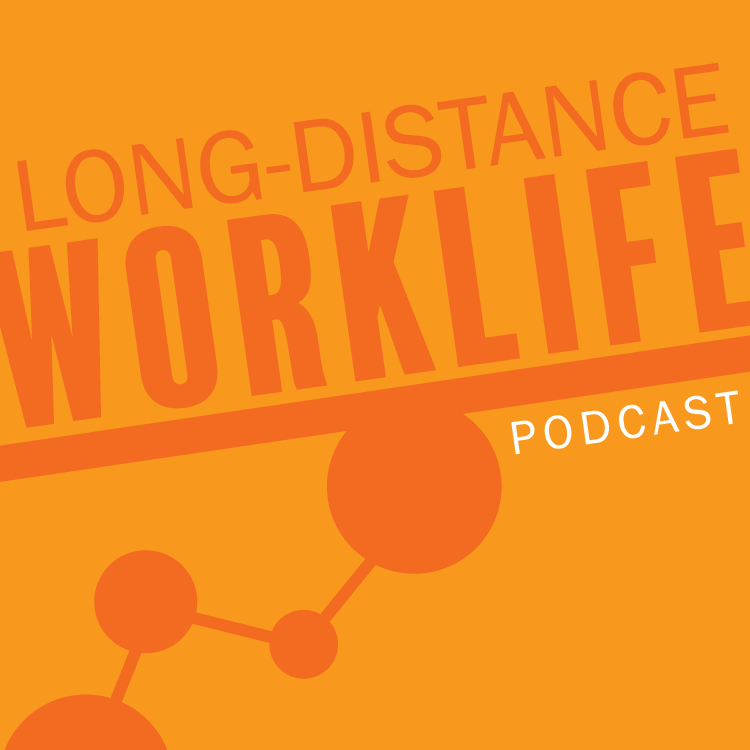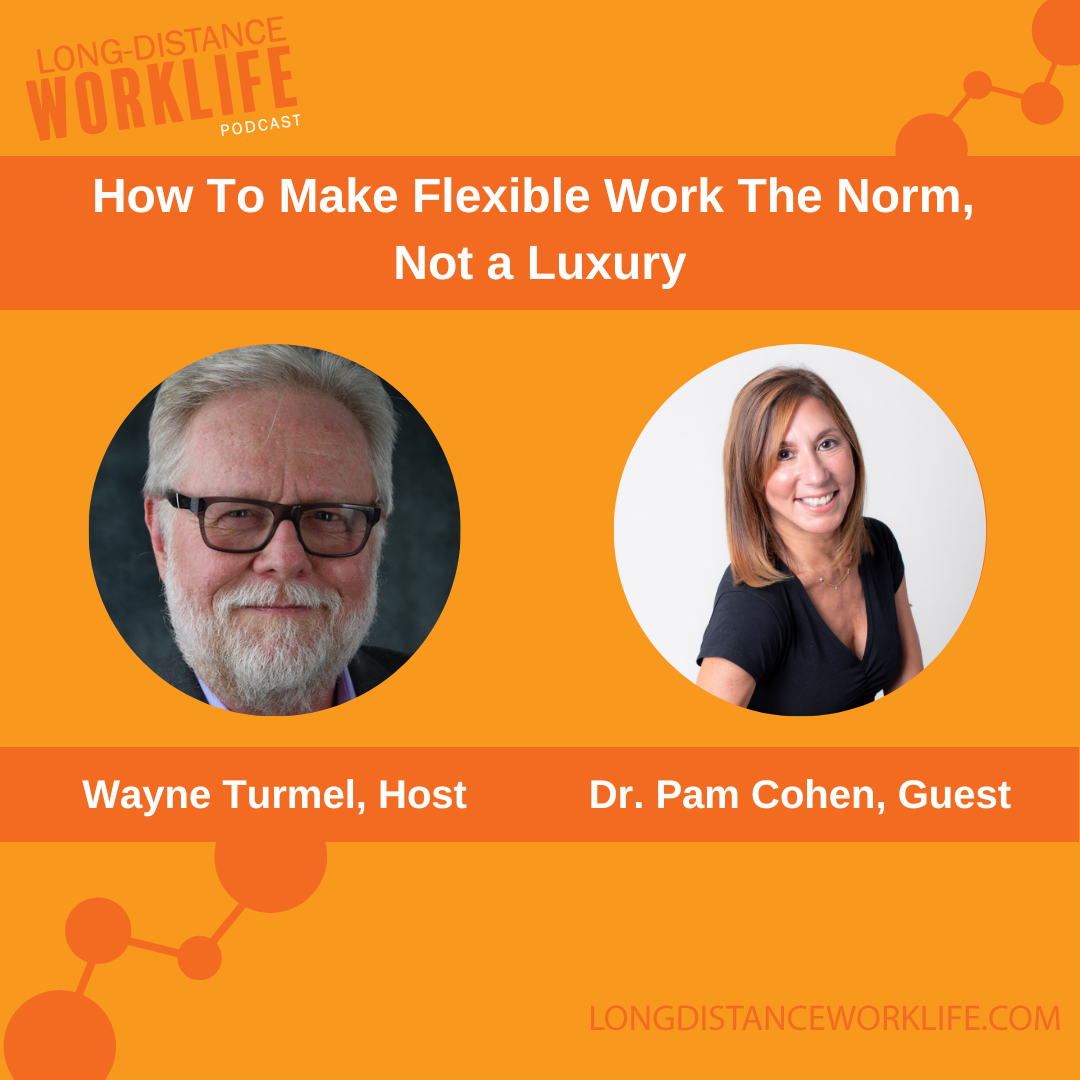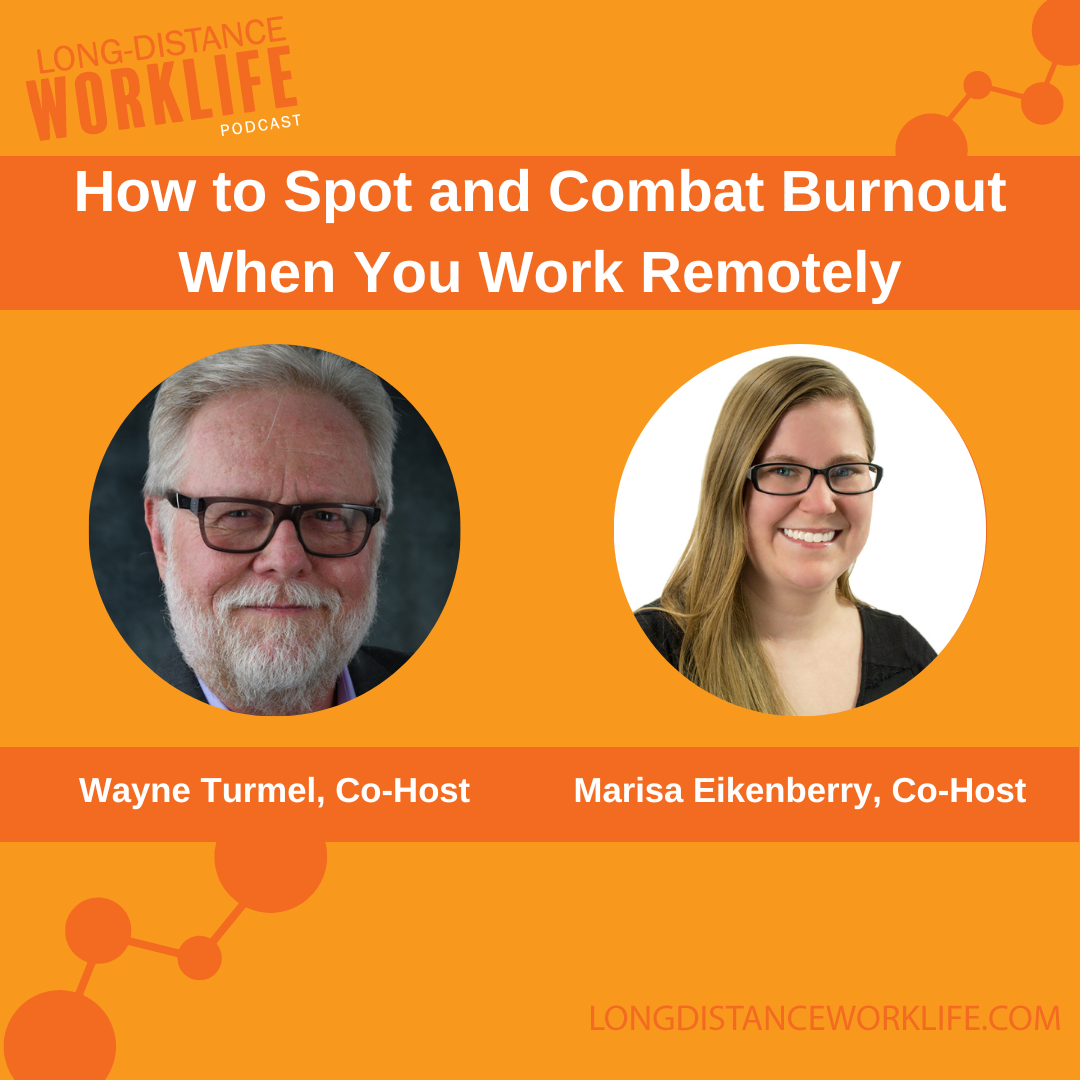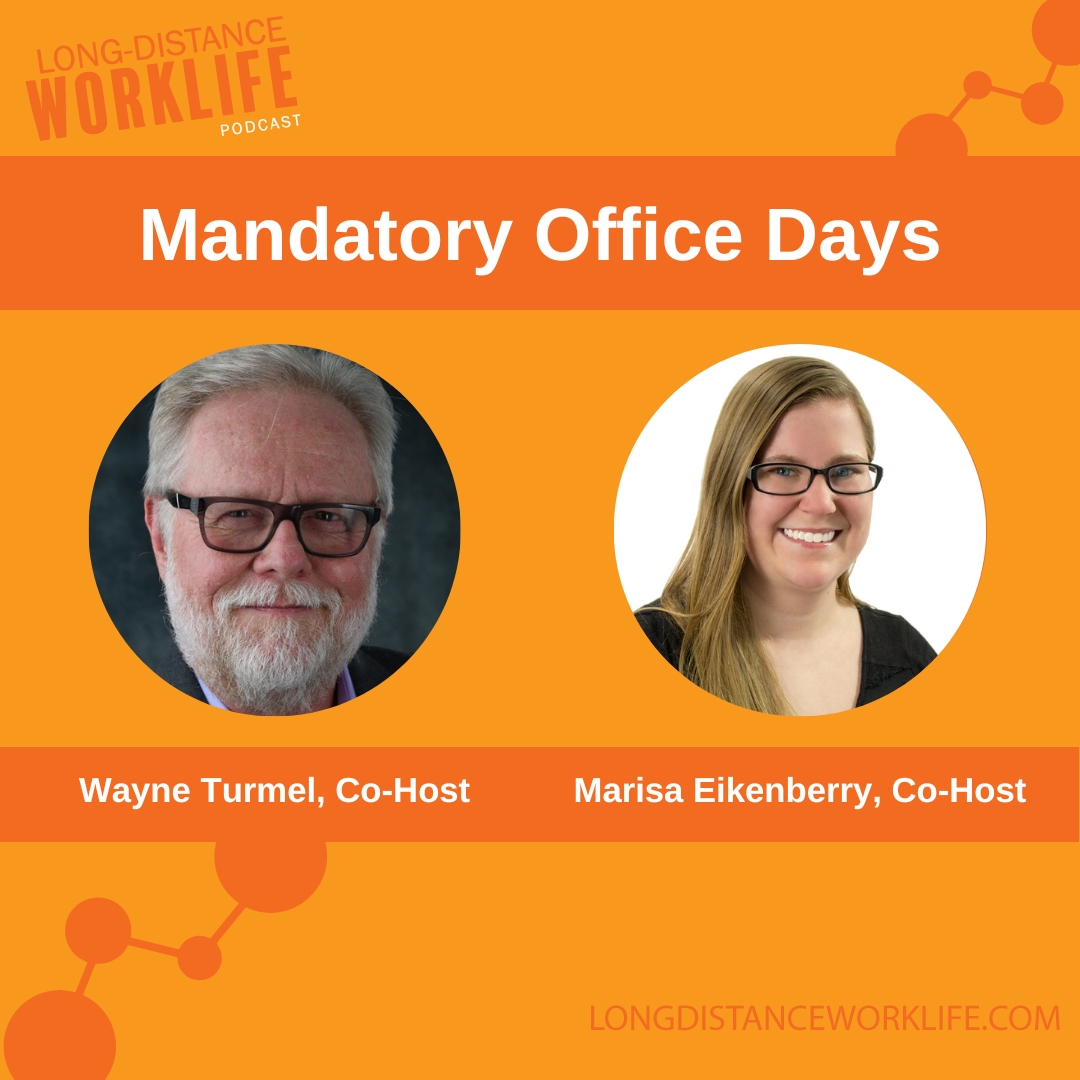00:00:08:08 - 00:00:38:00
Wayne Turmel
Hello everybody. Welcome back to another episode of the Long-Distance Worklife podcast. This is the podcast where we try to make sense of the crazy world of remote and hybrid work and working from home and generally trying to keep the weasels at bay. You know, one of the things that is tough about working from home or working from anywhere is handling the distractions and getting your mind right.
00:00:38:10 - 00:00:58:12
Wayne
And I found a site recently on YouTube that I think is worth discussing. And so we are going to chat with the founder of Meditative Bliss. And this is Kevin. Hi, Kevin. Who are you? What is Meditative Bliss? And then we'll actually get into our conversation.
00:00:59:04 - 00:01:23:09
Kevin Pierson
Okay. So my name's Kevin Pierson. Nice to meet all of you. And I started the YouTube channel, Meditative Bliss, which focuses on creating meditative music using various interested instruments, not limited, but including guitar, piano, a hand band we do. We use all kinds of instruments to get you to a relaxing place and combination with ISO chronic tones or by natural beats.
00:01:24:00 - 00:01:47:17
Kevin
Now those I'll give you a quick little rundown of are those are the synchronized sounds that only have a certain frequency in each ear. And every time you listen to them on both ears, it creates a certain phenomenon in your mind or your brain, actually, where you get into a more calm, collective state. Now, the goal of this channel was to do just that, get people to relax, meditate, sleep, aid.
00:01:48:02 - 00:02:04:05
Kevin
We want people to feel relaxed in these crazy times. We know pandemic economy, you name it, you know. So that's that's what we're about.
00:02:06:02 - 00:02:17:01
Wayne
So, Kevin, I mean, you've worked from home. I work from home. What are the types of things that stress us out that we need to get under control?
00:02:18:03 - 00:02:38:12
Kevin
Stress comes from several factors. One, your boss wants you to meet your deadlines. And when you keep pushing and pushing and pushing and don't give yourself a break, you're going to burn out. So how do you avoid this is you need to find a balance. Unfortunately, a lot of companies these days are more about productivity, getting things done.
00:02:38:18 - 00:03:04:13
Kevin
But there is that 15 minute break. And what I used to do when I was working for particular companies, I used to take 5 minutes, just 5 minutes out of my time to breathe deeply three times and just focus and be in the present moment. That's how I dealt with it, and it gave me a quick recharge. Now your mileage may vary, but as far as what stresses people out, that is very loaded.
00:03:04:21 - 00:03:23:11
Kevin
A lot of people are most likely just very, very focused. They don't give themselves any time to breathe. They're hyper focused. There is no time to do anything else but get the job done. Now, it depends also about what you do. If you're a call center, you're going to be back to back calls. That's not going to stop.
00:03:23:21 - 00:03:50:03
Kevin
So what I used to do when I was up back to back calls, I would state I would make sure I'm sure that you know this, too. But there is a program called the Finesse Program where people who work from home at particularly call centers have to wrap up the call in a certain amount of time. Now, that's just one example of how you are constantly being overloaded for 4 hours and tell your, Oh, I say it's for 2 hours and 30 minutes till you get your break.
00:03:50:15 - 00:04:13:20
Kevin
But then when people would take take their break, they're doing stuff that's not actually relaxing them and that causes more stress. They're probably thinking about their personal life while also also simultaneously taking care of their job. And as time has gone on, that productivity requirements has gone up. So my advice, in order to try to get the stress down would be to try to be more calm about it.
00:04:13:21 - 00:04:30:11
Kevin
Just collect your thoughts, try to calm down and don't take it too seriously because you do not want to stress yourself out to the point where you have a health issue. I did this to myself one time. I was on a IT call. I won't. And again, I won't say, you know who that was. But it took so long.
00:04:30:11 - 00:04:48:15
Kevin
I was so complicated and I was so fixated on trying to fix the problem. I ended up almost making myself pass out. So it's very important that you keep your, how should I say, your Zen in focus? You need to be centered. Do not get too enthralled in what you're doing. Do that.
00:04:48:15 - 00:05:24:01
Wayne
Then there's a couple of things here that I think we need to kind of be clear about. One is that, you know, nothing stresses us out more like for the love of God, stop stressing. Yeah, it becomes this kind of self-fulfilling nightmare. But the other thing is that when you say meditation and zen, then all of these things, there is kind of some initial skepticism from a great number of people.
00:05:24:01 - 00:05:51:17
Wayne
And I try not to be one of them because I understand the kind of academically how meditation works. My little A.D.D., squirrel infested brain doesn't always allow me to do the things I should do. So let's take a step back. What does it mean? What does meditation do? And what is it and what isn't it?
00:05:53:03 - 00:06:12:02
Kevin
I could just like, clarify. Okay, so meditation in itself, as we all have come to know it, is putting the body to stillness. Putting the mind to stillness is simply focusing on the breath. What this does to the body and the mind is it puts it into a calm state where your muscles loosen up. Your mind is not tense.
00:06:12:06 - 00:06:18:03
Kevin
Your thoughts begin to slow and breathing becomes easy, easier. Everything actually becomes easier. I mean.
00:06:18:06 - 00:06:28:02
Wayne
So it's a physical thing. It's a physical and mental thing. It's not necessary tied to philosophy or anything else. Right there is.
00:06:28:02 - 00:06:52:16
Kevin
Oh, no, no, no. It's this even science has taken a hard look at this. And they have reported that as the conscious mind begins to relax. So does the body and the mind. What do I mean by that? Well, your subconscious is constantly doing tasks in the background, just like a computer. You're. And while you're focusing on your, you know, your frontal lobe, your conscious, the day to day tasks, that makes it more difficult.
00:06:52:17 - 00:07:12:04
Kevin
Believe it or not, your brain's doing a lot at all times, even when at that rest, even when it's sleeping. So the whole point of meditation is to mitigate the risk of stress and its negative effects on the body and the mind. So by putting yourself in the present moment and focusing on the breath, you're actually partaking in linear body.
00:07:12:04 - 00:07:30:09
Kevin
Take take upon itself, true rest. Now, I was skeptical about it first myself. I thought I was a watcher woo. You know, when I was younger I was I would say about 13, 14 years old. I gave it a shot. I tried it, I gave it. I put 5 minutes in and I noticed that everything was just clear.
00:07:30:12 - 00:07:47:01
Kevin
It's hard to describe. And how you do that is by focusing on your breath and letting all thoughts leave your mind. Don't worry about anything for a moment. For a period of time, you are to let everything go. And then when you come back, you're refreshed.
00:07:48:02 - 00:08:19:18
Wayne
Now, that is that's a great description of it, by the way. And thanks to whatever out of it, which to a lot of people is a barrier. Right. If you think that it's associated with, you know, I am fat and old, the lotus position is not going to happen. Right. So but what I do find interesting about what you do is it's about the audio kind of background, what's going on.
00:08:19:18 - 00:08:40:10
Wayne
People like to say there's so much going on and yet people keep a lot of audio wallpaper going on around them, whether it's the radio or the TV or whatever is going on. I mean, why do we do that? And then, you know, what does that do to us when we're trying to work?
00:08:41:07 - 00:08:59:06
Kevin
Well, everybody's different in this regard. But basically when you start focusing on other tasks like, say, you're taking a 15 minute break, right? You want to see what's going on with the football game. You're stressed out, but you're not relaxing. You're trying to figure out who's winning the game or you're trying to watch like a short little clip on YouTube or anything else in between.
00:08:59:06 - 00:09:26:20
Kevin
Maybe you realize use a restroom. But the initial problem here is, is that a lot of people assume, and I still do this, that external stimuli like video games, TV, it's going to make you happy. It's going to refresh you. It doesn't it doesn't do that for you at all. Some people, they can make it work. You know, they can be like, okay, you know, I just watched a very short song of their from, I don't know, Katy Perry or something and it made me feel relax and that's fine.
00:09:26:20 - 00:09:45:17
Kevin
That's your process, whatever gets you into that state. But if you want to get into a true rest, you have to quiet the mind and let the body be still. And I know that's not a lot of time because again, 15 minutes goes like that. And next thing you know, you're back on the phone or doing whatever you got to do on the computer.
00:09:46:03 - 00:10:09:06
Kevin
So my advice is to get at least 5 minutes. 5 minutes. Don't focus on anything. Sit perfectly still. Is in a perfectly comfortable position. Focus on your breath. By the time you get to one, two and three breaths and you're totally focused on the task at hand to do nothing, your body will respond. You will see a difference.
00:10:09:06 - 00:10:34:01
Kevin
And you said mentioned earlier that you have ADHD and hi, we're partners. I have I can't focus. Sometimes I get distracted. I'm like, oh, look, a bee, you know, I've done that. I have the attention span of a child sometimes, and that's why I am all over the place. But long story short, I don't want anyone out there to think that they can't take those 5 minutes.
00:10:34:01 - 00:10:44:08
Kevin
It's going to take practice. And it might even feel uncomfortable at first because you're basically like, Wait, what's this? I don't like this. What is this? What is this? It's going to have.
00:10:44:15 - 00:11:13:00
Wayne
That idea of discomfort, I think plays a role. I know that for me, the older I get, the less. For example, when I'm walking or exercising, I don't plug in my earbuds. Right? I don't listen. I try to be kind of in tune with what's going on around me. Right. You know, and constantly having music doesn't help me.
00:11:13:00 - 00:11:38:00
Wayne
And I do it less and less as I'm writing and working. But what you're doing with meditative bliss is you are creating. It's like if you're going to play music, let's have it. Actually, it's serve a purpose, right? So it's a little bit more about how you're choosing this music and how people should be listening to it.
00:11:39:00 - 00:11:59:08
Kevin
Well, there isn't a right or wrong way to go about it. All I want you to do, if you listen to my music, is simply just relax. Don't even worry about the music will do it for you. Because like I said, in the actual music behind the actual instruments that are playing there is by neural beats and AIS with chronic tones.
00:11:59:20 - 00:12:25:15
Kevin
Those are a scientific I can't really explain it in layman's terms. Basically, it's like an audio program. It's meant to get your range with a certain frequency. It's like takes you from, I'm stressed to I'm here, you know what I mean? You're present. So regarding the actual totality of what it is I'm trying to do, I'm trying to get people to relax, listening to something that's not going to stress them out or like you're not.
00:12:25:15 - 00:12:54:08
Kevin
Listen to some rock and roll song. You're not listening to somebody sing. You're listening to just instruments playing and people expressing their soul, trying to get you to calm down. And those those tunes, all those terms we produce, they actually create a sense of peace and calm. And that's what our ultimate mission is. So when you listen to are those that type of music and I'm not the only one who does this, there's plenty more.
00:12:54:08 - 00:13:14:02
Kevin
In fact, I'm actually kind of, you know, I would say late to the game almost. I just decided I wanted to start doing something I love. So I started teaming up with certain individuals and we started collaborating, making music that just takes you to a peaceful place. Think of your favorite movie. All right? Where there's a scene where it's perfectly calm.
00:13:14:02 - 00:13:30:12
Kevin
You sit and you hear the set, the music in the background, that's basically the same concept, except you're going to be in your head, you're going to just be relax and you're going to be like this, or either be meditating of focusing on your breath, or you're going to be actually just laying down. Or maybe you want to keep doing your work.
00:13:30:21 - 00:13:47:18
Kevin
Some people have audio that increases concentration without actually increasing stress. So by keeping your mind distracted by the sounds, you can actually increase productivity and rest. I don't know if I kind of bounced around in your question there first.
00:13:48:02 - 00:14:20:14
Wayne
You know, I think I think that makes sense. I mean, you know, like you say, a lot of times we do things in the name of relaxation or probably more likely distraction from what we're doing that actually, you know, the brain is continuing to work really hard. And what we're trying to do is just bring it down. And that, of course, helps productivity.
00:14:20:14 - 00:14:57:19
Wayne
If someone is thinking about using tools like yours and as you say, there are no shortage of places on YouTube or wherever that you can find this stuff, whether it's guided meditation or or just the ambient music. How do they start? Because it especially, you know, people in the Western tradition kind of think that there's all this stuff associated with meditation and mindfulness that I have.
00:14:57:20 - 00:15:21:16
Kevin
Maybe I have sorry, I have heard about that. I haven't experienced it directly, but I have heard people say the meditation is a path somewhere dark, and that's it's not true. It's all it really is is a tool to get you to relax. I mean, as far as I am concerned, meditation was introduced to us even before Buddha perhaps.
00:15:22:06 - 00:15:42:14
Kevin
And the concept again is to reset the mind. And as we know, our minds are constantly, constantly doing stuff, even when we're at rest, we're thinking about things on a subconscious level, and that puts stress on the body and the mind. And as far as the music is concerned, that's the, you know, the ex machina, if you will.
00:15:42:21 - 00:15:52:07
Kevin
It actually puts you in that place so that when you actually start focusing on your breath and focusing on in a more calm state, you will notice the effects much quicker.
00:15:53:15 - 00:16:20:03
Wayne
Well, seriously, I just had no idea if this is a valid analogy, but for even the most skeptical I.T. engineering type of person, what's the answer when your computer is spinning and spinning and not going anywhere is you turn it off and reboot it. And that's essentially what we're talking about here is we're doing a hard boot on ourselves.
00:16:21:17 - 00:16:44:20
Kevin
That I love. You brought that up because that is the first rule. Whenever anything is happening and I'm like, okay, I don't know what's going on with this computer, I want to reset it. So that actually works really well here. So yeah, that's, that's exactly what it is. But get this, our brains are even more powerful. Those computers and those 5 minutes, 5 minutes can do wonders.
00:16:44:20 - 00:17:03:13
Kevin
And I completely get it because you know what people don't understand? Like your stress can stack, you can just like your happiness can stack the since we're living in such difficult periods of time here, you know, people are constantly, constantly stressed out. They like they have no time to rest. I got to do this. I'm thinking about this.
00:17:03:22 - 00:17:21:05
Kevin
Oh, I just got a 15 minute break from my call center job or whatever I'm doing now. I have to figure out how to calm myself down, and I got no time to calm down. I got to keep on pressing through and see what I can get done, but eventually that's going to catch up. And I know it's not your fault either, because, you know, companies, they have a very strict guidelines about what they expect.
00:17:21:22 - 00:17:54:18
Wayne
Well, yes, the companies do put pressure on us, and a lot of it is self-inflicted. Let me ask you one more question, which is we've been talking about the audio and how that impacts the brain. What should we be doing with the rest of us that's during this rest period or whatever? I mean, is it what physically should we be doing to maximize the impact of this?
00:17:55:12 - 00:18:12:10
Kevin
Well, you don't need to be in a lotus position. That's just a that. So yeah. Yes, knock that off the list. You don't need to be in the lowest position. You could be in any comfortable position that you need to be in. If you want to stand upside down doing a handstand that's comfortable to you, go for it.
00:18:12:10 - 00:18:32:15
Kevin
I mean, I think it's impractical, but long story short, all you got to do is just sit in that chair, get comfortable, adjust your back, let your arms rest. No tension whatsoever. Let it go. Just keep focusing on letting go of that tension. No matter how much it says, you know, your mind tells you like we got to tense up because I got to do this.
00:18:33:03 - 00:18:53:21
Kevin
Never listen to it. Okay? And that that moment of time you're giving yourself, whether it's 5 minutes, 15 minutes or even an hour, whatever it is for your practice, if you give your your body the opportunity to sit still and listen to this music, not just my end yet we get there's plenty of other good music out there, too, besides meditative bliss.
00:18:54:02 - 00:19:15:00
Kevin
Not trying to not promote myself here. Yeah, but long story short, if you give your body the opportunity to sit still, even for 5 minutes, and focus on your breath while listening to this music, or even put the music on a low volume while you work, it'll keep you in a, you know, a straight line. Because when your brain's going and doing stuff, it's all over the place.
00:19:15:00 - 00:19:35:00
Kevin
It's bouncing all over the place. So what you want to do is you want to be centered and you'll notice when it happens to. As for those who have trouble with this being the fact I struggle with this with myself, I would suggest you just keep trying till it becomes natural. This is unfortunately for some people going to be a practice makes perfect perfect kind of deal.
00:19:35:03 - 00:19:39:09
Kevin
However it's something you should definitely look into. It will do wonders.
00:19:39:09 - 00:19:44:15
Wayne
There's certainly a reason they call meditation a practice, right?
00:19:45:02 - 00:19:45:21
Kevin
Yeah.
00:19:45:21 - 00:20:19:10
Wayne
Kevin, thank you so much, man. I really appreciate it. I think that we get caught up in the day to day of which technology we should be using and how do we become more productive, and how do I squeeze out the last ounce of my brain into my work and something as and I use the word simple. Simple is not always easy, but something as simple as this, as a way of getting some of that energy and focus back, I think is is important for people to consider.
00:20:19:15 - 00:20:47:17
Wayne
So thank you very much, ladies and gentlemen. As you know, if you've been listening to the show for a while, if you go to longdistanceworklife.com, you will find links to Meditative Bliss and Kevin's socials and all of that. Good stuff, please. You know the drill. You listen to podcasts like subscribe, tell your friends if you are listening to Meditative Bliss, like subscribe and tell your friends.
00:20:47:17 - 00:21:24:23
Wayne
That's how this crazy ecosystem works. Before I let Kevin go, I just want to remind you that if you are not familiar with the work of the Remote Leadership Institute, do check out the Long-Distance Worklife page. There is a link to a four part free video series. We urge you to take advantage of you can also on the website ask questions which we then integrate into episodes where Marisa joins me and we answer your questions and concerns.
00:21:25:06 - 00:21:32:18
Wayne
So thank you very much for being with us. Kevin Thank you so much, man. I really appreciate your time.
00:21:32:18 - 00:21:39:19
Kevin
I appreciate you having me here. I really appreciate you have me on your show. I thanks everybody for having me and I hope to see you on my channel.
00:21:40:13 - 00:22:14:09
Wayne
And with that, keep the weasels at bay. Take it easy. Have a great, great day. Thank you for listening to the long distance work life. You can reach me Wayne@KevinEikenberry.com. Marisa@KevinEikenberry.com. Have a great day. Thanks so much.



